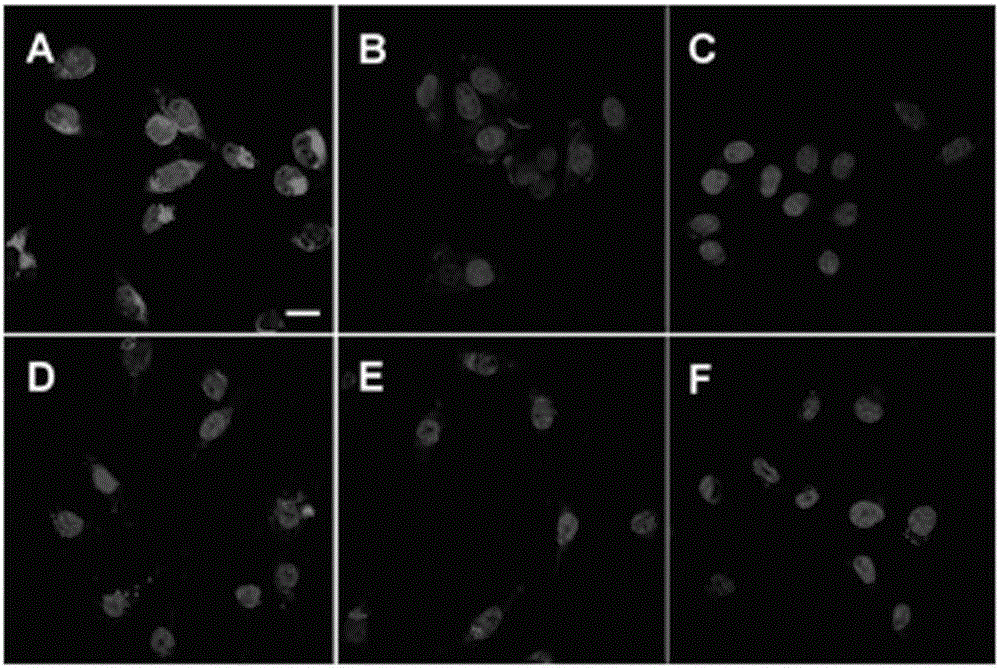Polymers and oligomers with aggregation-induced emission characteristics for imaging and image-guided therapy
A technology of conjugated polymers and compositions, applied in the direction of organic active ingredients, photodissociation of drugs in the body, active ingredients of heavy metal compounds, etc., can solve problems such as affecting the effect of photodynamic therapy and weakening the ability of singlet oxygen
- Summary
- Abstract
- Description
- Claims
- Application Information
AI Technical Summary
Problems solved by technology
Method used
Image
Examples
example 1
[0247] Aggregation-Inducing Luminescent Dyes for Cell Tracking
[0248] The AIE fluorescent agent 4,7-bis[4-(1,2,2-triphenylethenyl)phenyl]benzo-2,1,3-thiadiazole (BTPEBT) was used for long-term cell display The traced surface functionalized green-emitting AIE dots are reported as examples. BTPEBT is an example of a conjugated system that can be used in this patent. A mixture of lipid-poly(ethylene glycol) (PEG) and lipid-PEG-maleimide was selected as the encapsulation matrix, and BTPEBT was encapsulated to form AIE dots with biocompatibility and surface functionality. A cell-penetrating peptide derived from the HIV-1 transactivator of transcription protein (Tat) was further conjugated to the dot surface to generate AIE-Tat dots with high cellular internalization efficiency. AIE-Tat dots showed an emission maximum at 547 nm, similar to GFP, with a high quantum yield of 63%, and stable green fluorescence over 10 days under different pH conditions or long-term incubation in bu...
example 2
[0324] Specific light-up bioprobes with AIE and activatable photoactivity for targeted and image-guided photodynamic ablation of cancer cells
[0325] In another exemplary embodiment, the present invention is figure 2 Activatable photosensitizers for image-guided photodynamic ablation of cancer cells shown in A. figure 2 A shows the synthetic route of functionalizable TPE derivative TPECM-2N3 and biological probe TPECM-2GFLGD3-cRGD.
[0326] Cathepsin B is a lysosomal protease overexpressed in many types of tumors. It can specifically cleave substrates containing the -Gly-Phe-Leu-Gly-(GFLG) peptide sequence and has been used in enzyme-responsive drug delivery. On the other hand, cyclic arginine-glycine-aspartate (cRGD), which can selectively interact with avb3 integrin overexpressed in cancer cells, has been used for targeted drug delivery.
[0327] In an exemplary embodiment, the probe consists of four parts: 1) an AIE fluorescer with orange fluorescence as a contrast ag...
example 3
[0332] Combination of mitochondrial-targeted molecular probes with aggregation-induced luminescence-mediated image-guided chemotherapy and photodynamic therapy
[0333] In another exemplary embodiment, the invention is an AIE probe having zero, one or two triphenylphosphonium ligands, which is capable of selectively targeting mitochondria. An exemplary embodiment of a probe with zero triphenylphosphonium ligands is TPECM-2Br, which is represented by the following structure:
[0334]
[0335] TPECM-2Br
[0336] An exemplary embodiment of a probe with one triphenylphosphonium ligand is TPECM-ITPP, which is represented by the following structure:
[0337]
[0338] TPECM-1TPP
[0339] An exemplary embodiment of a probe with two triphenylphosphonium ligands is TPECM-1TPP, which is represented by the following structure:
[0340]
[0341] TPECM-2TPP
[0342] The synthetic route of above-mentioned compound is as follows Figure 5 shown.
[0343] Lipophilic triphenylpho...
PUM
| Property | Measurement | Unit |
|---|---|---|
| diameter | aaaaa | aaaaa |
| diameter | aaaaa | aaaaa |
| diameter | aaaaa | aaaaa |
Abstract
Description
Claims
Application Information
 Login to View More
Login to View More - R&D
- Intellectual Property
- Life Sciences
- Materials
- Tech Scout
- Unparalleled Data Quality
- Higher Quality Content
- 60% Fewer Hallucinations
Browse by: Latest US Patents, China's latest patents, Technical Efficacy Thesaurus, Application Domain, Technology Topic, Popular Technical Reports.
© 2025 PatSnap. All rights reserved.Legal|Privacy policy|Modern Slavery Act Transparency Statement|Sitemap|About US| Contact US: help@patsnap.com



